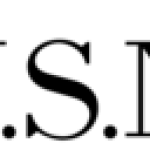- Industry: Government
- Number of terms: 11131
- Number of blossaries: 0
- Company Profile:
An instrument that detects and measures ionizing radiation by measuring the electrical current that flows when radiation ionizes gas in a chamber, making the gas a conductor of electricity.
Industry:Energy
The process of adding one or more electrons to, or removing one or more electrons from, atoms or molecules, thereby creating ions. High temperatures, electrical discharges, or nuclear radiations can cause ionization.
Industry:Energy
A common method for concentrating uranium from a solution. The uranium solution is passed through a resin bed where the uranium-carbonate complex ions are transferred to the resin by exchange with a negative ion like chloride. After build-up of the uranium complex on the resin, the uranium is eluted with a salt solution and the uranium is precipitated in another process.
Industry:Energy
Radioactivity that is created when stable substances are bombarded by ionizing radiation. For example, the stable isotope cobalt-59 becomes the radioactive isotope cobalt-60 under neutron bombardment.
Industry:Energy
An evaluation that considers the plant as a whole rather than system by system.
Industry:Energy
The center of worldwide cooperation in the nuclear field, through which member countries and multiple international partners work together to promote the safe, secure, and peaceful use of nuclear technologies. The United Nations established the IAEA in 1957 as “Atoms for Peace. ”
Industry:Energy
(1) An atom that has too many or too few electrons, causing it to have an electrical charge, and therefore, be chemically active. (2) An electron that is not associated (in orbit) with a nucleus.
Industry:Energy
The magnitude of a rapid, short-term increase in the appearance rate of radioiodine in the reactor coolant system. This increase is generally caused by a reactor transient that results in a rapid drop in reactor coolant system pressure relative to the fuel rod internal pressure.
Industry:Energy
An association established in January 1997 to give international nuclear regulators a forum to discuss nuclear safety. Countries represented include Canada, France, Japan, Spain, South Korea, Sweden, the United Kingdom, and the United States.
Industry:Energy
As requested by the NRC in Generic Letter 88-20, individual Plant Examination for Severe Accident Vulnerabilities?(November 23, 1988), a risk analysis that considers the unique aspects of a particular nuclear power plant, identifying the specific vulnerabilities to severe accident of that plant.
Industry:Energy
